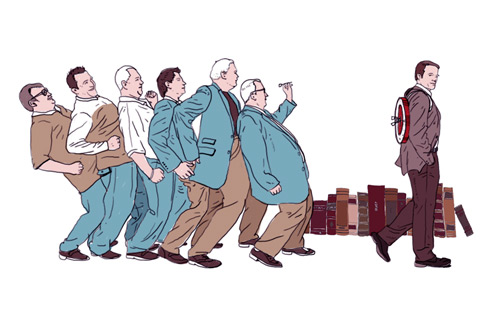Three Rules of Criticism
Criticism is a good thing. The purpose of criticism is to help people improve what they are responsible for. If a designer is told, “the interface is inconvenient,” they can make it better, resulting in a more user-friendly interface. If a writer is told, “you have a typo,” they can fix it, and now there’s no typo. Thanks to criticism, the world becomes a better place.
But there’s a problem: sometimes criticism is hard to take because it’s phrased as a personal insult. This kind of criticism doesn’t achieve its purpose and can damage relationships and reputations.
To make your criticism helpful, maintain good relationships, and protect your reputation, follow the three rules of criticism.
First Rule of Criticism: If You Don’t Like It, Speak Up
Criticize anything you don’t like, regardless of whether someone else has already criticized it or whether you believe your feedback will make a difference.
- The button in your online banking doesn’t work — write to tech support.
- The text on a website is poorly written — contact the author.
- The asphalt in your yard is laid badly — report it to the city portal.
If you’re being ignored about an important issue, don’t hesitate to become a “client from hell” and make your concerns known to those responsible. The reality is, dispatchers, designers, presidents, programmers, writers, and all of us tend to ignore those who don’t stand up for themselves. If only one person reports a problem, it’s as if the problem doesn’t exist. But if a hundred people complain about the same issue every day, we’ll find a way to solve it.
Don’t expect the problem to solve itself. Don’t hope someone else will speak up for you. If you don’t like something — criticize it.
Second Rule of Criticism: If You Criticize, Explain Why
For criticism to be helpful, you need to explain exactly what you don’t like and why it’s a problem:
- The button can be clicked, but nothing happens. I don’t get an SMS, so I can’t make a payment.
- The text doesn’t make it clear what to do after receiving the notification. I didn’t do anything, and the payment didn’t go through.
- The asphalt in the yard was laid poorly: it’s full of potholes. It’s hard to drive a car, and it’s impossible to ride a bike.
Always criticize the work, never the person. Don’t imply that the person responsible is incompetent. Here’s what not to say:
- Do you even use your own online banking?
- Did you hire students to write this text?
- Did you spend all the money and leave nothing for the asphalt? Just come to our yard and see the conditions your voters live in.
This kind of criticism leads nowhere because it comes across as arrogant. Since a real person is receiving your feedback, they won’t want to respond to it. Imagine someone writes on your website: “What idiot made this site?”
Criticism is already hard to take because it means someone didn’t do their job well. Don’t make it worse with arrogant comments. If you criticize, explain your reasoning.
Third Rule of Criticism: If You Know How to Fix It, Suggest a Solution
A good designer sees bad design everywhere and knows how to improve it. The same goes for writers and developers:
- A designer, unlike a regular user, knows Fitts’s Law and understands interface issues. They can suggest improvements that an average user wouldn’t think of.
- An experienced editor studies international best practices and knows how to write effective public announcements. They can create a much more convincing announcement than a typical official or city resident.
- A developer knows how to optimize animation and what 60 FPS means. Where a user blames a slow computer, the developer is already optimizing the animation.
If you know how to improve something you’re unhappy with, suggest a solution. It doesn’t matter if it’s the perfect fix, if it will be implemented, or if you’ve considered every detail. If you know — suggest it.



